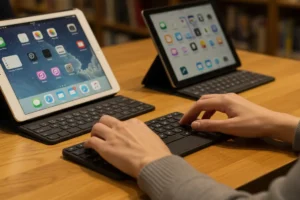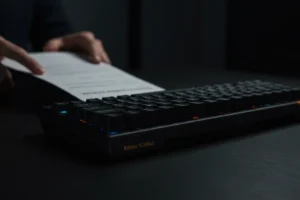Hey there, fellow keyboard enthusiast! Have you ever thought about how a simple piece of tech could spark intense debates, make waves in the tech world, or even polarize an entire community?
Yeah, I’m talking about controversial keyboards. From unexpected design choices to groundbreaking tech that didn’t quite land the way people hoped, keyboards have had their fair share of moments that made us scratch our heads, raise our eyebrows, or even gasp in disbelief.
I also want to say one thing before anything else, these keyboards were considered controversial by all the media at the time. I know there are bad keyboards that have aged well but at the time they weren’t that good.
In this article, I’ll take you on a journey through some of the most talked-about and controversial keyboards in the world. Whether you’re a hardcore gamer or a tech geek, there’s something here for everyone!
Before we dive in, if you love all things keyboard-related, feel free to check out my website Keyboards Technology for more articles, reviews, and tutorials.
Don’t forget to explore my previous posts for more insights into the world of keyboards! Now, let’s jump into the controversial world of keyboards!
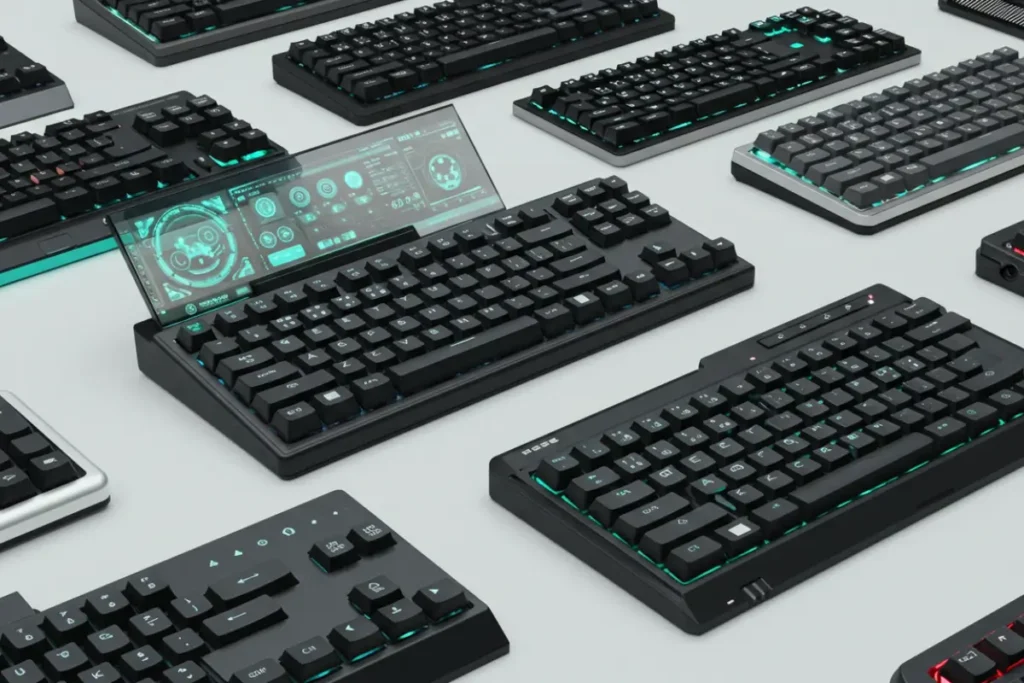
The Controversial Keyboards That Shocked the World
1. The Microsoft Natural Keyboard (1994)
When Microsoft introduced the Natural Keyboard in the mid-90s, it was anything but ordinary. The design was split, with a curve that some people thought would revolutionize ergonomic typing.
But, boy, was it a head-scratcher! The split key layout, with the keyboard separated into two sections, confused many users at first. Typing felt uncomfortable and odd, leaving a lot of people scratching their heads about its practicality.
While it was a groundbreaking attempt to improve ergonomics and typing efficiency, the design was polarizing. Some users loved the idea of reducing strain, but many others couldn’t get past the awkward feel and the increased learning curve. Over time, though, its influence on future ergonomic keyboard designs became undeniable.
Check out more about keyboard history in my post on The Evolution of Mechanical Keyboards.
2. The Apple Butterfly Keyboard (2015-2019)
Apple’s butterfly keyboard is one of the most controversial designs in recent memory. Initially introduced as part of the MacBook’s ultra-slim design, the butterfly keyboard was all about thinness and precision. However, the reality was far from perfect.
Users immediately began reporting key failures, sticky keys, and frustrating typing experiences. The small, shallow key travel was a major turn-off for those used to the responsive, clicky feel of traditional keyboards.
Apple tried to fix the issues with each new iteration, but the damage was done, and the butterfly keyboard became synonymous with reliability problems.
Apple eventually discontinued the butterfly keyboard and returned to a more traditional design, proving that sometimes, innovation doesn’t always result in improvement.
But if you still want to learn more about the Apple keyboard lineup, check out Apple’s Keyboard Evolution.
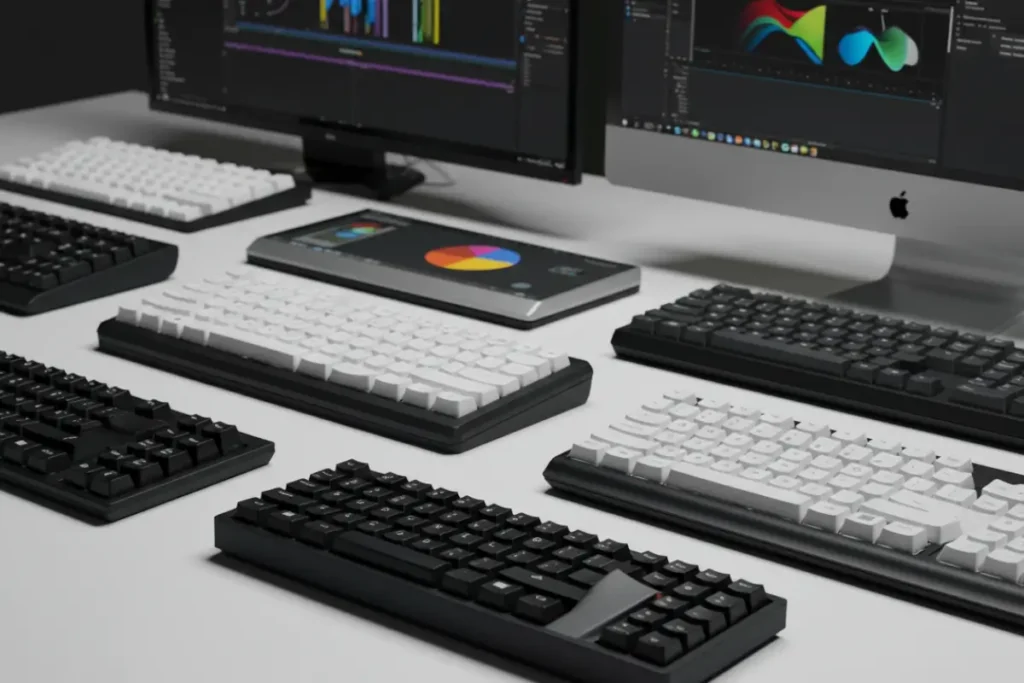
3. The Razer Tartarus V2 (2017)
If you thought gaming keyboards were just about a few extra keys and RGB lighting, think again! The Razer Tartarus V2 takes gaming to a whole new level with its multi-functional keypad.
This one made waves not only because of its futuristic looks but also because of its unconventional design.
With a 32-key layout, the Tartarus V2 essentially replaces the traditional keyboard with a compact gaming keypad that allows gamers to assign multiple actions to a single key.
But, while it may sound like a gamer’s dream, some found it to be more confusing than helpful. Is it too much customization? Is it just gimmicky? The answers were all over the place.
Its weird design led to questions about whether it was necessary. Some gamers loved the convenience, while others couldn’t shake off the feeling that it was a bit of an overcomplication.
Would you use a keypad like this, or does it seem excessive to you?
Why These Keyboards Sparked Debates
What’s fascinating about controversial keyboards is how they challenge traditional design norms. It’s not just about creating something that works; it’s about changing the way we think about interaction and usability.
Innovation vs. Tradition: Finding the Balance
Keyboards like the Microsoft Natural and the Apple Butterfly push boundaries with innovative designs, but they also remind us that not all innovation is meant to be.
Sometimes, sticking to what works is just as important as trying something new. For example, the Razer Tartarus shows us how gaming setups can evolve, but does it do too much, or does it strike the perfect balance?
User Experience: The Heart of Controversy
When a product doesn’t meet user expectations or needs, controversy is inevitable. Keyboards aren’t just about looks; they’re about how they feel and perform. A sleek design means little if it doesn’t provide comfort or responsiveness.
The Role of Personal Preference
Let’s not forget, keyboards are incredibly personal. While one gamer swears by a minimalistic design, another may prefer a full-on mechanical setup with customizable keys and RGB lighting
. What’s comfortable for one person can feel completely wrong for someone else. In a world where personalization matters, keyboards are bound to cause differing opinions.
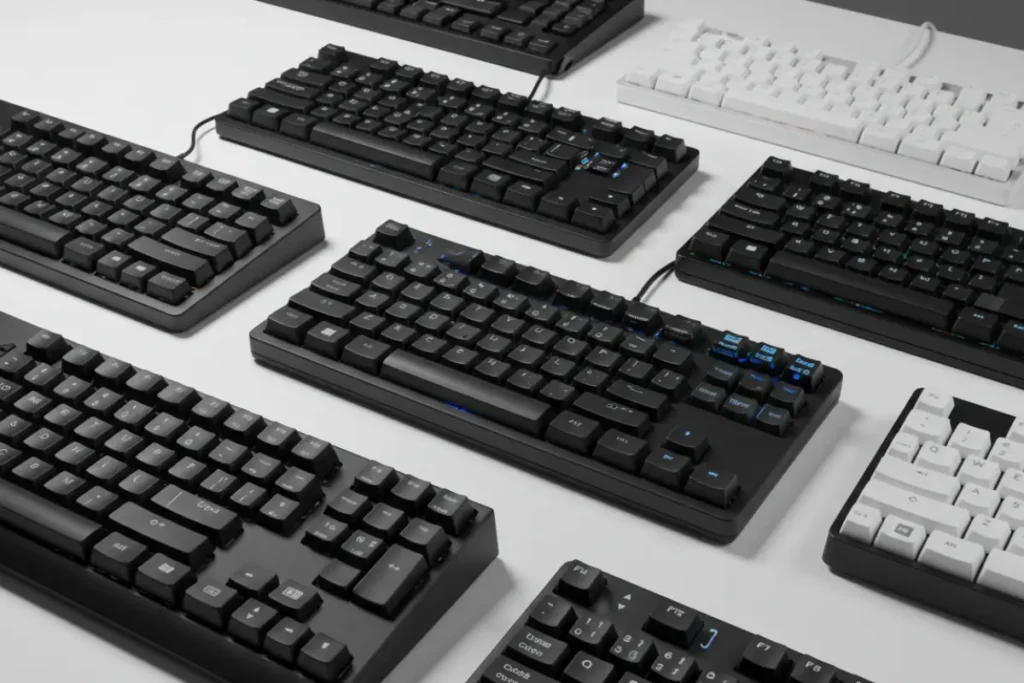
The Future of Keyboard Design: What’s Next?
As we move forward, keyboard innovation will likely continue to evolve in unexpected ways. We might see new ergonomic designs, more customizability, and enhanced connectivity.
The future of keyboards isn’t just about staying functional, but also about offering solutions for people who spend hours typing or gaming.
What Could Be the Next Big Thing?
Here are some possible keyboard innovations that could stir up the next round of debates:
- Haptic Feedback Keyboards – Imagine typing on a keyboard that gives you tactile feedback as if you were pressing a physical button, even when the key isn’t moving.
- Flexible Keyboards – Roll them up for portability and flexibility. Could this make traditional keyboards obsolete?
- AI-Powered Keyboards – Adaptive keyboards that learn and suggest shortcuts based on your typing habits. Cool or creepy?
FAQs: Get Your Keyboard Questions Answered
Q: Why do some people hate the Microsoft Natural Keyboard?
A: Many users found the split design uncomfortable and took time to adjust to it. It was a bold move in ergonomic design, but not everyone was a fan.
Q: What happened with the Apple Butterfly Keyboard?
A: It had serious reliability issues, with many keys malfunctioning over time. After years of complaints, Apple eventually moved away from the design.
Q: Is the Razer Tartarus V2 worth it for gamers?
A: If you prefer a compact and customizable keypad, it could be perfect. But if you like traditional keyboard layouts, it might feel like overkill.
See More
- Best Piano Keyboards for Kids and Young Learners
- Typing on the Go: Top Keyboards for iPad and Android Tablets
- Royal Kludge Keyboards: Are They Still Worth It in 2025?
Conclusion: The Love-Hate Relationship with Keyboards
At the end of the day, keyboards are incredibly personal. What one person deems a game-changer, another might think is a disaster. It’s the price we pay for innovation—some ideas hit the mark, while others fall flat.
The keyboards we’ve discussed are just a few examples of how designs can stir up strong opinions. But isn’t that what makes tech so exciting?
Every industry has its mistakes and successes, and with keyboards and computing it is no different, but among all, these keyboards are also good to be seen and see that there are brands that are big and have already made mistakes with their specialty like keyboards.
If you enjoyed reading this article, I’d love to hear your thoughts! What’s the most controversial keyboard you’ve ever used? Drop a comment below and let’s chat about it!
If you’re into more tech and keyboard content, feel free to explore more of my posts at Keyboards Technology.
🎮 Join Our Discord Community!
Are you passionate about keyboards, gaming, and tech? Come hang out with fellow enthusiasts, ask questions, share your setup, and stay updated with our latest content!
👉 Join Now
